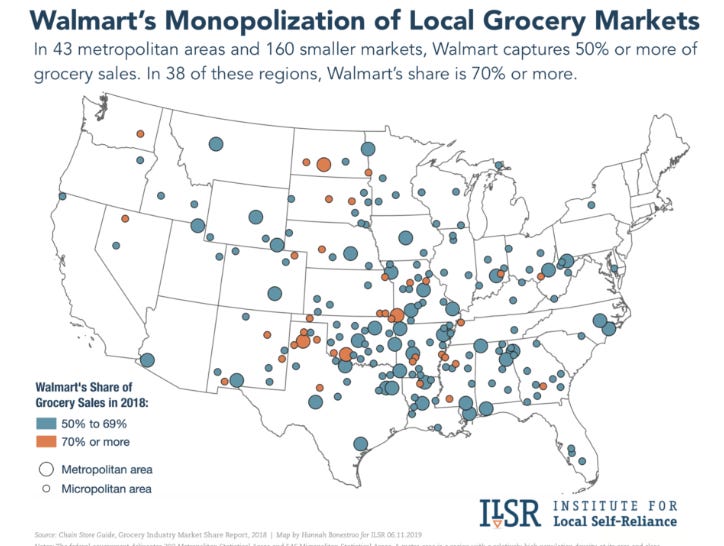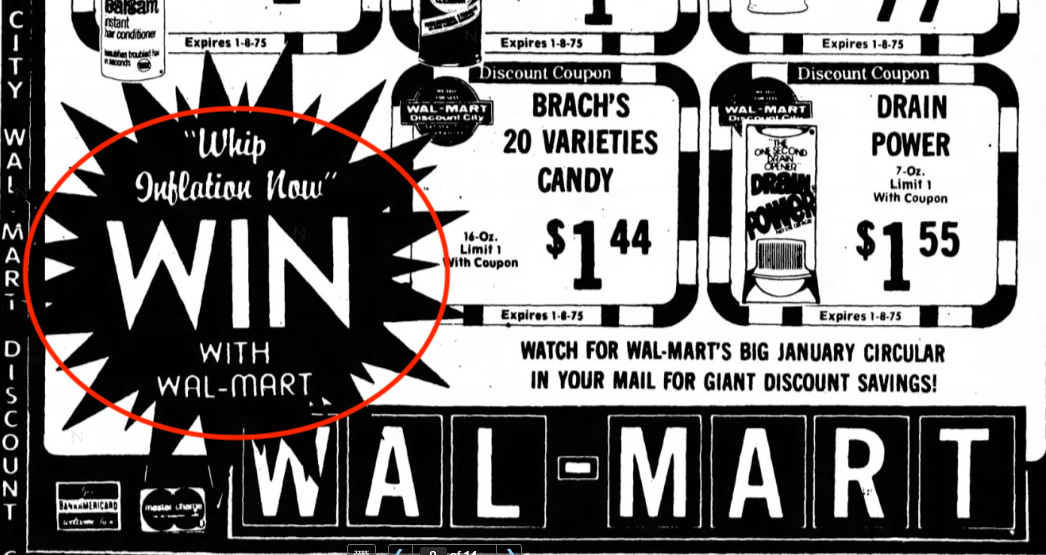Hi,
Welcome to Big, a newsletter about the politics of monopoly. If you like it, you can sign up here. In this issue, I’m going to start discussing a core part of monopoly power, which is pricing law. In short, the ability to set prices is the ability to govern.
Dem Debate Two: First, I had planned to write about the second Democratic debate, but there wasn’t much monopoly-related news. This in and of itself is telling, because it suggests that whether we discuss corporate power is highly contingent upon the candidates. In the first debate, there were three candidates who see monopoly power as a foundational political problem - Amy Klobuchar, Cory Booker, and Elizabeth Warren. In this second debate, there were no candidates who sought to push the debate, mostly out of intellectual discomfort with the topic.
The Monopoly Crisis Hits National Security: The argument that China has exploited monopolization and financialization is about to break into the mainstream. Yesterday, The American Conservative published a piece I co-authored on how, because of Wall Street, we are increasingly dependent on China for core inputs that go into weapons. We go through the history, and how the structure is similar to what the Nazis attempted in the 1930s, and what New Dealers foiled.
Former Brigadier General Rob Spalding picked it up, ad did former diplomat and Congressman Tom Perriello, the Director of the Asian Centre, and a host of think tank people who focus on China and national security. It’s also going around the Hill. The lesson of the piece is that the ability to make things, while controlled by private corporations through market rules, is a public good. And if we allow private equity and China to control our markets, we allow them to control our security. And to put a fine point on the problem, the Wall Street Journal today reported that the Obama administration, by neglecting market structure in microchips, let China get access America’s best technology, the ‘crown jewels.’
Walmart: America’s Food Government
One of the most important organizations focused on the problem of monopoly is the Institute for Local Self-Reliance, which regularly publishes reports and research on chain stores, banks, Amazon, and small business. Yesterday Stacy Mitchell of ILSR published a report on how Walmart controls a significant chunk of America’s food system.
The map below is beautifully done. Food markets are regional in terms of consumers, and often suppliers in fresh foods that can easily spoil. Walmart in many regions is the government of food.

How did Walmart achieve this power? Sam Walton was an incredibly hard worker and had immense talent, but the company achieved is power through changes in law. Mitchell traces it to two shifts. The first is that antitrust enforcers stopped enforcing a 1936 antitrust law called Robinson-Patman. “Aimed squarely at checking the power of big retailers,” Mitchell wrote, “the Robinson-Patman Act barred chains from using their leverage as major buyers of goods to coerce suppliers into charging them less and their competitors more.”
This law was aimed at the then-dominant A&P supermarket chain, but the use of concentrated buying power to disadvantage rivals is something undertaken by everyone from Standard Oil in kerosene to Microsoft in operating systems. In the 1970s, enforcers just stopped enforcing that law. It’s still on the books. The FTC and DOJ just choose to ignore it. Why? Well, in the 1970s, inflation caused political elites to rethink who should have pricing power. President Gerald Ford, for instance, ran a campaign called Whip Inflation Now, encouraging producers and retailers to lower prices. Ending rules that might prevent discounts was seen as inflationary.
Here, for instance, is a 1975 Wal-Mart ad (I put the red circle in there).

The second change Mitchell cites is the Supreme Court’s 1993 case Brooke Group Ltd. v. Brown & Williamson Tobacco Corp, when the court legalized predatory pricing, which is to say, selling below cost to drive rivals out of business. Predatory pricing too had a long and storied history, with Standard Oil engaging it in across regions, cross-subsidizing low prices in an area with competition with high prices in other regions it had monopoly power. Predatory pricing law was weakened starting in the 1970s, it was fully eroded in the Brooke Group decision in the 1990s. It’s not a coincidence that Walmart exploded in the 1970s, but finally opened a store in every state in the country in the 1990s.
I would add one more change to Mitchell’s story, which is the evisceration of Fair Trade laws in 1975. These laws protected the rights of manufacturers to set their own prices and thus prevent discounters from selling their branded products below cost. Fair Trade is a complex pricing rule, but it essentially forced stores to compete over customer service and quality rather than price. When those laws disappeared, so did the independent Mom and Pop shop.
Anyway, the net effect of these changes is that Walmart now governs in large swaths of the country, choosing the prices consumers pay, structuring communities, and more importantly choosing the terms and prices for suppliers, farmers, and workers. It restructured major corporations, forcing them to offshore their production to China if they wanted to retain access to the Walmart sales shelf. Walmart became so powerful in the mid-2000s that the Federal Reserve regularly relied on the company for sales data as part of the central bank’s job of setting interest rates.
Today, Amazon is eclipsing Walmart in importance in the political economy, using many of the same techniques (and even logistics personnel) Walmart used, and then some. Amazon is a super-chain, not just across the retail landscape, but across multiple infrastructure areas. It uses predatory pricing and bulk pricing power to extract concessions and undermine competitors; there’s a reason it didn’t make money for its first twenty years of operations. It then layers onto what Walmart did a sophisticated surveillance capacity, as well as the competitive advantage of not actually having to have a network of stores or to stock inventory.
We know how to fix all of these problems, we can do so with laws designed to help the public structure how companies can price their goods and services. Or perhaps, the FTC and DOJ could just start enforcing Robinson-Patman yet again. Or both.
Which brings me back to politics. There’s a lot of anger in our world focused on our government, which seems listless and corrupt. Democrats on stage last night had lots of thoughts on what to do, but their comments felt mostly empty and silly. So perhaps a better question than how to fix our government is to start with something more basic. Who is actually governing? It’s hard to read Stacy Mitchell’s report and conclude that it’s “We The People.”
Thanks for reading, and if you enjoy this newsletter, please share it on social media, forward it to your friends, or just sign up here.
cheers,
Matt Stoller

